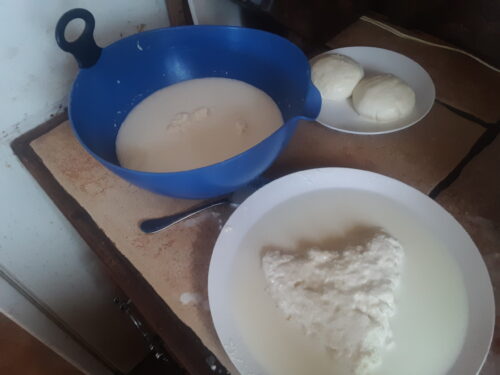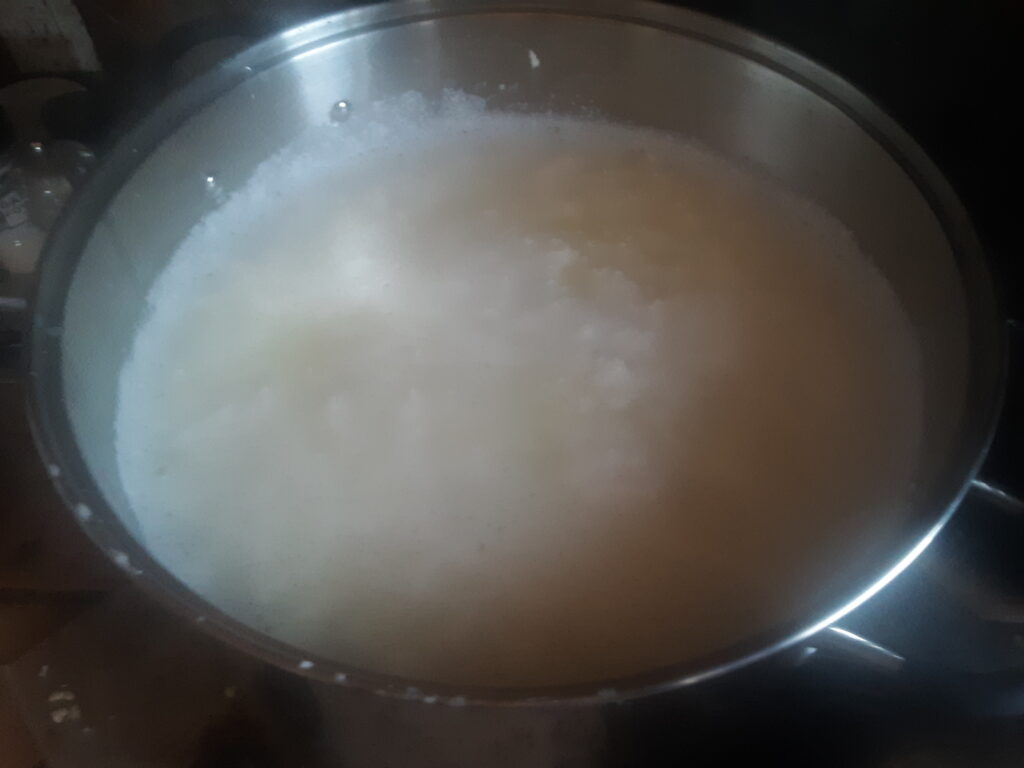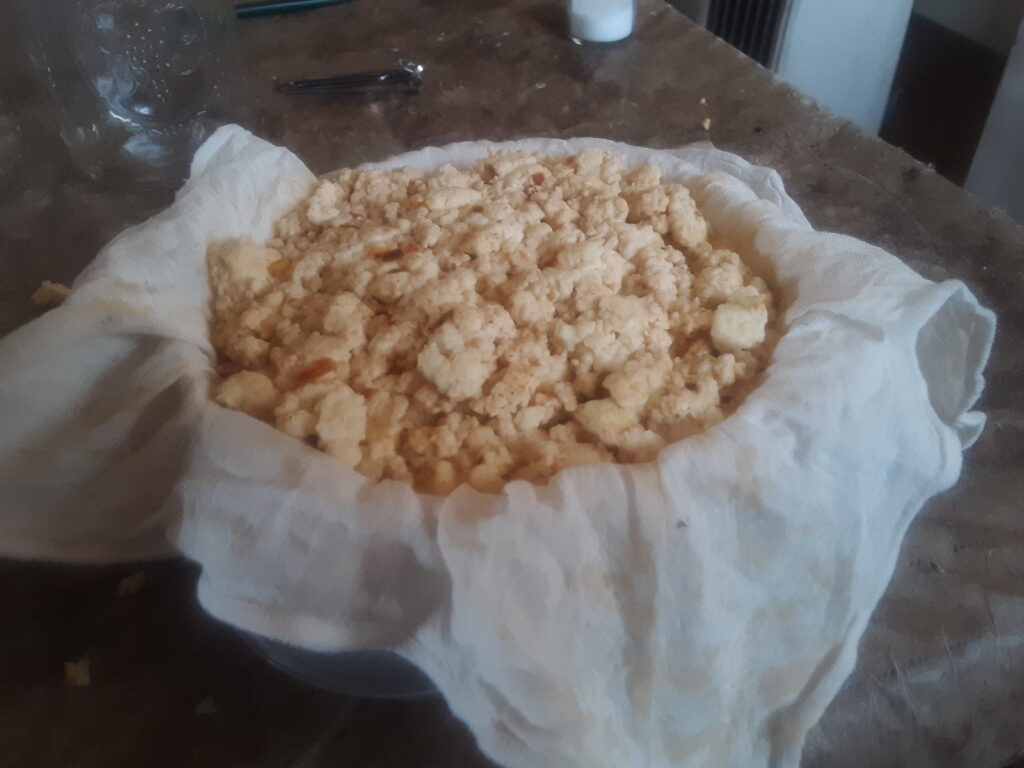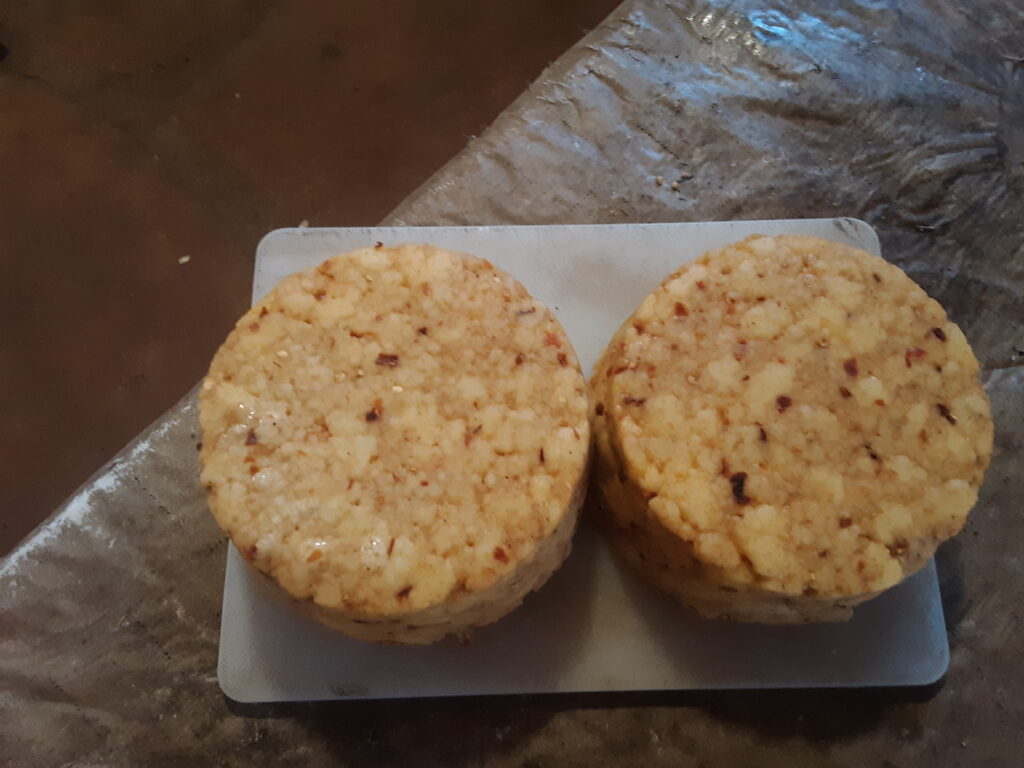
Hi, Phoenix here continuing the blog post series on dairy farming. During this post, I’ll share some of the experiences K and I have had making fresh cheese. This is opposed to aged cheese, which is a longer process and we’ll discuss this in the next post.
Making fresh cheese is theoretically simple.
- Heat up the milk

- Add acid, which curdles the milk

- Strain and season the cheese curds.

- The curds can be left as crumbles (e.g., cheese curds for frying), pressed (e.g., queso fresco), or cooked and stretched (e.g., mozzarella).

Simple enough, right? Well, variations of this general recipe determine the type and characteristics of your cheese. Higher temperatures and longer cooking times generally lead to firmer curds. Higher milk fat content generally leads to higher yields (i.e., more curds). Using rennet generally yields more and firmer curds. Traditionally, rennet comes from the digestive acids in a calf’s stomach before it starts eating grass, requiring the slaughter of the calf to obtain it. Currently, there are vegetable-based rennets available in the market derived from various sources like thistles or particular microbes in tablet or liquid form, and is fairly inexpensive, with roughly 10 tablets for $10.00.
For making fresh cheese, K and I use a 2-gallon or 5-gallon stainless steel pot depending on how much cheese we want to make. The acids used to make cheese will corrode an aluminum pot and give cheese a metallic taste. We have a digital thermometer to monitor the temperature throughout the cooking process. For recipes calling for rennet, we use tablets or liquid depending on the recipe. They are interchangeable, but the tablets are difficult to split exactly if you only need a half or quarter of a tablet. For straining the curds, we use a fine-mesh strainer or a colander lined with cheesecloth. What’s left over is whey, a nutritious, tasty, and versatile by-product. It’s what whey protein powder used for muscle building is made of, after all. I’ve used it to make soups and stews, cooked rice, and cooked beans. Our dogs also love the stuff, and it’s a cheap source of protein for them.
Since there are several cheese-making cookbooks, I’m not going to go into details of how to make specific cheeses here. Cheeses easy to make at home include chevre, queso fresco, and paneer. And remember, you don’t need a homestead to make your own cheese! Some store-bought whole milk, some white vinegar or lemon juice, and a stainless steel pot will get you pretty far.
Next blog post: Part 5: Dairy Farming–making aged cheese (by Phoenix)
